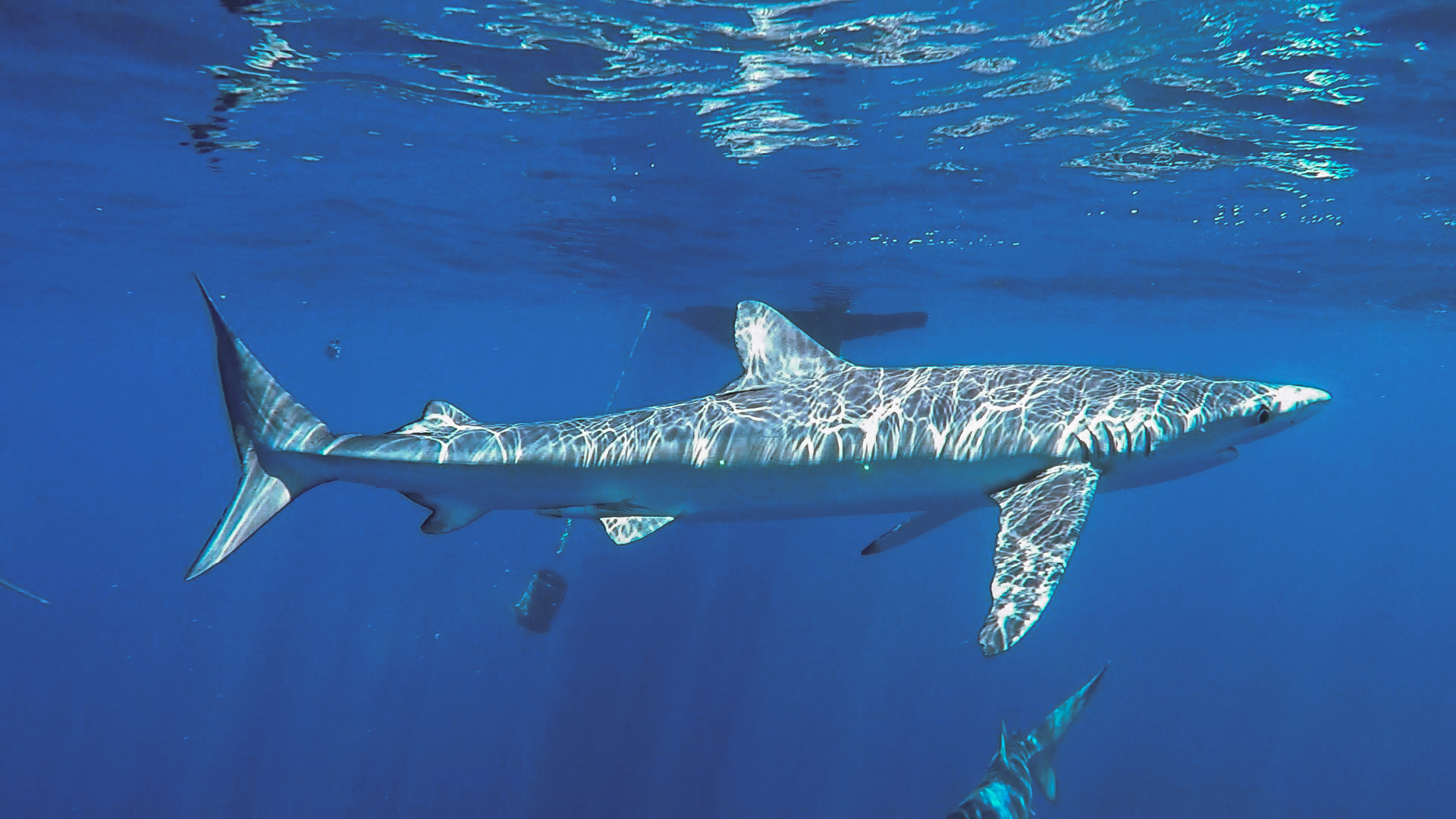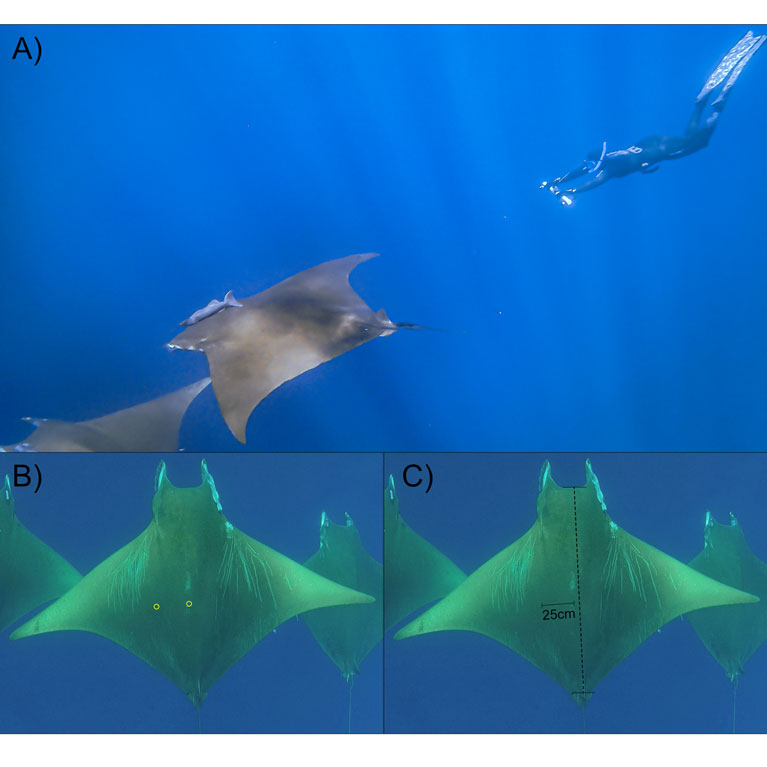Size Matters
Using laser photogrammetry to characterise regional elasmobranch population demographics.
Information about the size, shape, and structure of an organism – known as morphological data – is critical for understanding a species’ life history and population demographics. It also provides important context for animal movement patterns. Specifically, body size can be used to categorise regional population demographics and shed light on space-use patterns of population subgroups (i.e., juvenile, sub-adult, adult individuals). For example, blue sharks (Prionace glauca) have been shown to exhibit demographic variation in movement patterns within the central North Atlantic, determined by the combined exploration of body size and location data (Vandeperre et al., 2014). Morphometric data also played a pivotal role for categorising the population dynamics of aggregating sickle-fin devil rays (Mobula tarapacana) around the Saint Peter and Saint Paul Archipelago in Brazil. Analysis of body size (estimates compared to an object of known size) showed that seasonal aggregations of the species consisted primarily of sexually mature adults. When coupled with observations of mating scars – present on both males and females – it was hypothesised that the region acts as an important site for mating individuals (Mendoca et al., 2018).

Image of a blue shark with laser photogrammetry laser dots (green) projected perpendicularly onto the animal’s body for calculation of fork length (the distance from the shark’s snout to the base of the caudal fin). Photo © Sophie Prendergast.
The EcoDivePWN team, a research group from the University of the Azores – Okeanos, has been using laser photogrammetry to collect morphometric data on regionally occurring elasmobranch species such as the sicklefin devil ray, blue shark, and whale shark (Rhincodon typus). This crucial information is then compared to baseline data on individual sizes at different life history stages to categorise regional population demographics and identify critical habitat areas for different population sub-groups.

Example of the laser photogrammetry system used by the EcoDivePWN Team with a GoPro or action cam (with the wide-angle setting turned off) mounted centrally between two lasers positioned 50 cm apart. The team also utilises a similar laser system with the lasers positioned 25 cm apart. Photo © Sophie Prendergast
For free-swimming elasmobranchs, laser-photogrammetry is an effective and low-cost method for collecting morphometric data. Paired lasers are mounted onto a housing carrying a single camera and project a scale – of known, calibrated size – onto any animal passing perpendicularly to the laser set up (see Figure 2 & 3). These images are then analysed using programs such as Adobe Photoshop or ImageJ where researchers can use the scale to extrapolate the animals’ body size or other measurements. Additionally, due to the low cost, laser photogrammetry can be a valuable tool for citizen science within the shark diving industry.

Example of laser photogrammetry being used to calculate disk width (the parameter used to estimate the maturity of mobulid species) of aggregating sickle fin devil-ray in the Azores Archipelago. Image A shows a devil-ray as after passing beneath the laser system. Photo © Jorge Moreno. Image B and C show how disk width is calculated using the known distance between the two laser dots. Photos © Bruno Macena
The method is fairly straightforward, however, it is important that users adhere to specific precautions to ensure that high quality measurements are obtained. Potential sources of error range from non-parallel alignment of the lasers, parallax error (caused by a change in viewpoint), incorrect animal body position, and image distortion caused by light refraction through a wide-angle lens or camera housing. When conducted properly laser photogrammetry is a valuable tool for marine ecologists and helps us gather the morphological data needed to better understand the life history, population, and movement demographics of marine species.
